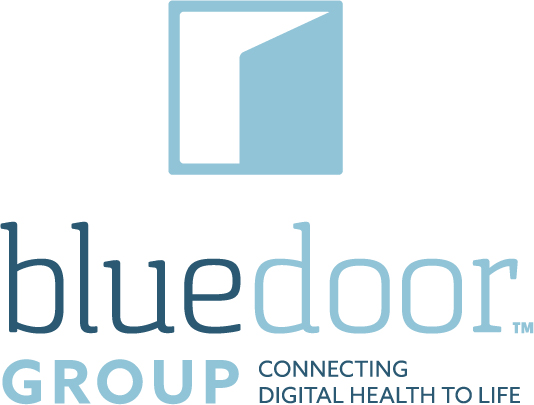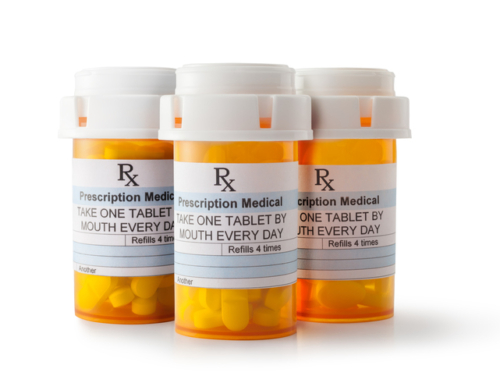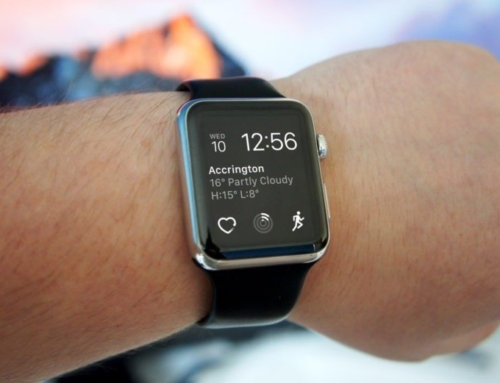Smart algorithms will soon diagnose skin cancer, dermatologists consult patients online, and 3D printers will print out synthetic skin to fight tissue shortages. There is a lot going on in dermatology, and medical professionals should prepare in time for the technological changes before they start swiping through the specialty. Let’s start by familiarizing with the most amazing technologies changing dermatology!
Your body’s best guard in a hostile world: your skin
Everything is written on your skin. Every wrinkle, spot, and color tells a story, and not only a medical one. This miraculous organ can show you as a litmus paper whether you have a disease. For example, people with few red blood cells may look pale, while patients suffering from hepatitis have yellowish skin color. Yet, this is just the tip of the iceberg.
The skin protects you against moisture, the howling winter winds, the scorching sun rays, the swarm of germs and toxic substances. It acts as the most reliable thermostat: helps you prevent dehydration and protects you from the consequences of too much heat or cold. It allows you to feel sensations: touching, itching and even pain. As weird as it sounds, the skin also acts as a storage room: its deepest layer can store water, fat or metabolic products. If it is injured, it produces wounds. And while it protects you from an unimaginably huge amount of parasites, bacteria, viruses, and germs, sometimes the price for not letting these disease agents into the organism is its own disease.

Skin cancer is too common
According to statistics from the WHO, currently, between 2 and 3 million non-melanoma skin cancers and 132,000 melanoma skin cancers occur globally each year. Data from the US Skin Cancer Foundation suggests that each year over 5.4 million cases of non-melanoma skin cancer are treated in more than 3.3 million people only in the US. The annual cost of treating skin cancers there is estimated at $8.1 billion: about $4.8 billion for non-melanoma skin cancers and $3.3 billion for melanoma, which is an insanely huge number. And what is even scarier? For example, the fact that according to the estimations One in five Americans will develop skin cancer in the course of a lifetime.
The situation is not a tiny bit better in other countries. In 2014, 15,419 new melanoma skin cancer cases were diagnosed, Cancer Research UK found. The results of their surveys also indicate that incidence rates have increased by 119 percent in the UK since the early 1990s. And if you look at the last decade, this number still reaches 45 percent. International trends aren’t a cause for more hope, either. A study found that the incidence of cutaneous malignant melanoma has steadily increased over the past 50 years in predominately fair-skinned populations. Moreover, incidence rates of melanoma continue to rise in most European countries (primarily Southern and Eastern Europe), whereas, in Australia, New Zealand, the U.S., Canada, Israel and Norway, rates have become rather stable in recent years.

Luckily, digital technologies are on their way to help dermatologists diagnose and treat skin diseases better and more effective. Innovative solutions have a huge impact on healthcare in general, but in case of certain subfields, such as surgery, even the transformation of the whole specialty can be expected. Looking at dermatology, it will probably not experience such a radical turn as surgery, but the shift will still be determining. Technology has been shaping dermatology praxises for years, and this will accelerate in the coming years. Here, I decided to enlist all the digital solutions which help medical professionals truly bring dermatology into the 21st century.

1) Telemedicine
As you can easily detect if you have a skin problem, and smartphones coupled with super-fast internet connection make it easy to send pictures or footage anywhere, telehealth solutions appeared naturally in dermatology. The options of teledermatology services are soaring. FirstDerm, Spruce, Direct Dermatology, SkinMDnow, Zwivel or iDoc24. They all work based on the same principle: they promise patients to connect them to a dermatologist online for consultation within a very short period of time. Usually, people can load up their photos to a certain platform, and dermatologists give advice based on it.
The popularity of the platforms shows there was an urgent need for this solution. iDoc24 had already more than 7,000 cases submitted from all over the world. It also turned out that the majority of the issues were rather harmless: iDoc24 found 70 percent of all their reviewed cases could be self-treated and they advised the patient to undertake further tests in all the remaining 30 percent of cases. It is a win-win for everyone: patients do not have to wait in crowded waiting rooms for an exam, while dermatologists can deal with the easier cases in shorter time online.
2) Big Data
The analysis of Electric Health Records (EHRs) and other huge data sets allows for the optimization of even such mammoth-like systems as healthcare. Data analytics help improve the quality and coordination of care, reduce the incurred costs and avoid unnecessary use of resources. Dermatologists also recognized the huge potential of big data to bring lasting change to their specialty.
The American Academy of Dermatology introduced a clinical registry called DataDerm in 2016. The database was created by dermatologists and connects data on millions of patients from thousands of dermatologists throughout the US. It eases the pain of reporting and allows medical professionals to demonstrate the quality of care they provide, to payers, policy makers, and the medical community. At the same time, it gives every member a private analysis of his or her practice’s data against national averages – down to the patient level. It is great for setting standards in dermatology, measuring each participant how they perform and ensuring the average quality of care.

3) Robotics
Amazing high-tech machines appeared on the stage of medicine lately. The New Jersey-based company, Canfield Scientific have recently installed the first commercial Vectra WB360 whole-body skin lesionmapping system. It is able to take a 360-degree scan of the entire body and identifies all the lesions on the skin. But what is even more exciting, the potential in robots helping dermatologists, especially aesthetic dermatologists in the future.
Many skin cancer types and other skin problems are treated with laser therapies, and a study found that robots might be able to help there. Researchers compared the accuracy and consistency of laser irradiation treatments carried out by humans and robotic arms, and investigators found the robot-guided treatments to be superior to the manually guided treatments. In the future, we can expect laser therapies to be carried out by “robotic surgeons” with humans controlling the process.

4) Artificial Intelligence
Deep learning algorithms are especially good at recognizing certain images, thus they will certainly have a place in the future of medical specialties dealing with medical imaging, such as radiology or dermatology. For example, IBM decided to let dermatologists leverage on the results of its deep learning platform, Watson in order to diagnose melanoma and other types of skin cancer faster, more accurate and preferably without the need for many biopsies. At the IBM T.J. Watson Research Center, experts found that their deep learning system was able to achieve a 76% accuracy at diagnosing melanoma cases based on dermatology images, while the average accuracy for the eight dermatologists on that data set was 70.5%. It is a very promising result!
Researchers at Stanford University carried out a similar experiment. They created an artificially intelligent diagnosis algorithm for skin cancer with the help of an algorithm developed by Google that was already trained to identify 1.28 million images from 1,000 object categories. Then, they made a database of nearly 130,000 skin disease images representing over 2,000 different diseases; and trained their algorithm to visually diagnose potential cancer. From the very first test, it performed with inspiring accuracy. It performed at least as well as dermatologists participating in the research, which is very impressive! Now, the team is considering to make the algorithm smartphone compatible in the near future, bringing reliable skin cancer diagnoses to our fingertips. Mind-blowing innovation in sight!

5) 3D Printing
The answer for organ shortages of all kinds, including skin, as well as to the increasing reluctance to test new cosmetic, chemical, and pharmaceutical products on animals, is 3D printing. Many innovators recognized it already and plenty of research is going on. Scientists at the Spanish Universidad Carlos III de Madrid in collaboration with the bioengineering firm BioDan Group have presented a prototype for a 3D bioprinter that can create an entirely functional human skin. James Yoo and his team at the Wake Forest School of Medicinein the US has also developed a similar prototype that can create synthetic skin. San Diego-based bioprinting firm Organovo teamed up with cosmetics giant L’Oréal in 2015 to supply 3D-printed skin.
3D printing could ensure that critical tissue shortages, which were reported for example in Australia in 2016or in Japan in March 2017, would never again hamper the tasks of medical professionals.
6) Regeneration
Injuries of the skin take a long time to heal. For a 10 mm cut, it takes 1-2 weeks to turn into a scar and then slowly fade away. Researchers are working on various innovations for shortening the healing process and accelerating the natural responses of the human organism for more effective skin regeneration.
Healthpoint Biotherapeutics developed a skin cell spray to improve conventional treatment for leg ulcers. According to a study, applied prior to wrapping the leg with compression bandages, the spray both improved the extent of healing and did it in less time than healing with bandages alone. Another remarkable innovation is ACell’s MatriStem, an extracellular matrix, which helps regrow tissues – it even induced the regrowth of an amputated fingertip in 2010. A very similar extracellular matrix helped treat a US Marine who lost 70 percent of his thigh muscle in a mortar explosion in Afghanistan. Researchers at the McGowan Institute for Regenerative Medicine at the University of Pittsburgh applied a “cocktail of proteins” and growth factors derived from pig bladders. After a few weeks, his leg muscles started to grow back! Simply amazing!
7) Social media
Facebook, Twitter, and LinkedIn are the social media platforms which everyone with an internet connection knows and uses. They are wonderful communication tools, sources of information and common knowledge, they function as community building platforms and spaces for promoting great causes. It is no different regarding healthcare – or dermatology, for that matter.
For example, Webicina, the first medical web 2.0 guidance service, offers Dermatology and Web 2.0, a free comprehensive resource containing all the web 2.0 tools from quality blogs and communities to online slideshows and mobile applications. It was designed to help medical professionals interested in dermatology find the best resources online. Moreover, La Roche-Posay, a division of L’Oreal, uses social media to promote its SOS Save our Skin campaign, which it does in conjunction with the US Women’s Dermatologic Society. The American Academy of Dermatology launched its 2017 SPOT Skin Cancer campaign, which is encouraging women to check both their partners and themselves for signs of skin cancer. The AAD started the #SpotSkinCancer hashtag on social media and encourages everyone to share their photos or videos to raise awareness how important it is to detect skin cancer in time.

8) Health sensors
As the market for wearables and health sensors is exploding, you can find all kinds of tiny gadgets measuring your vital signs and health parameters. In the future, some of these devices will not only do measurements but offer diagnosis or participate in the treatment of certain diseases. Skin-related conditions might be the first to diagnose or treat with small, sensor-like materials or gadgets. This year, L’Oréal introduced its wearable sensor for measuring sun exposure and notifying the user when they are about to get sunburn. The patch changes color to warn against skin cancer.
What’s more, a group of Indian researchers presented a unique patch for treating skin cancer at the Society of Nuclear Medicine’s Annual Meeting in 2012. The patch is infused with phosphorus-32, a radioactive isotope used to treat some types of cancer. The researchers carried out a small study on the effectiveness of the patch and the results were very promising. Ten patients with skin cancer on their faces were treated with the patch, and three months after the treatment, biopsies showed no sign of their tumors. When biopsies were performed again at six months, however, the basal cell carcinomas had returned in two of the patients. I believe it is a great achievement, and I hope to hear about more similar research projects in the future.

9) Nanotechnology and nanoparticles
Nanotechnology proves to be a fertile field in dermatology and especially in cosmetics; as nanoparticles make their way into UV-light absorbing sunscreens and anti-aging products. When properly engineered, nanomaterials may be able to topically deliver retinoids, antioxidants, and drugs such as botulinum toxin or growth factors for rejuvenation of the skin in the future.
Yet, nanotechnology also has to offer a lot in the fight against cancer. Researchers also are reviewing the use of nanomaterials for the treatment of melanoma. In particular, gold, when turned into a nanomaterial called nanoshells, has been shown to be a useful treatment for melanoma in animal studies. So, perhaps skin cancer will be treated by gold in the future. Who knew that everyone’s favorite jewelry material has such beneficial traits?

Although the above list certainly has its limitations, it shows the vast potential of digital technologies to change the landscape of dermatology very soon. Thus, a student who wants to become a dermatologist might better become friends with disruptive innovations to get the most out of them when they start practicing.










